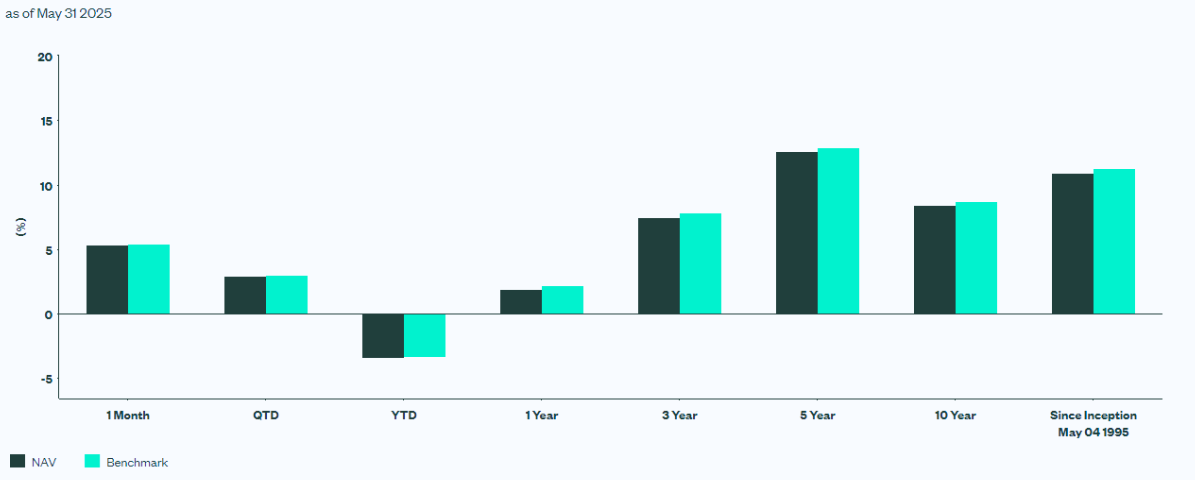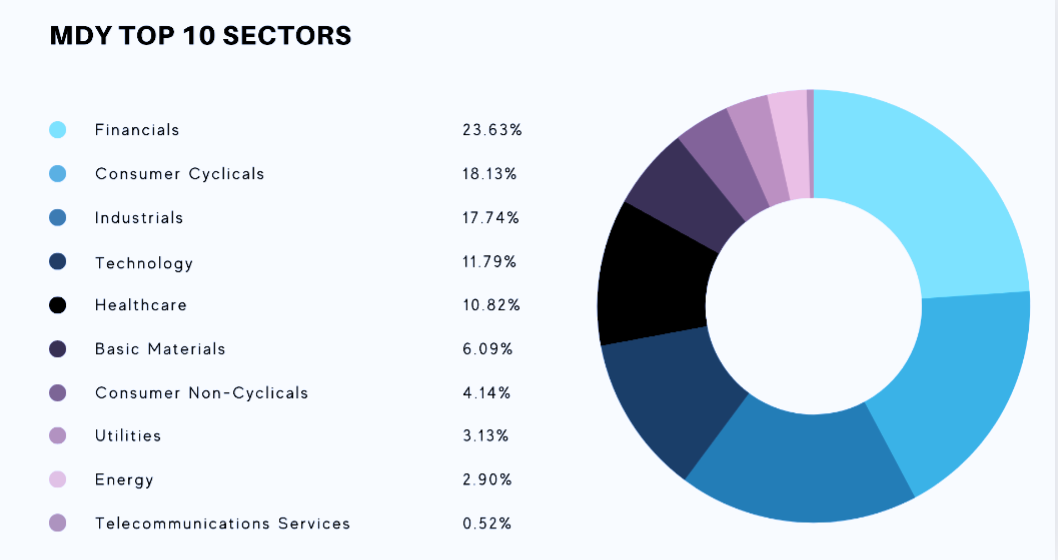Mid-cap stocks often occupy a sweet spot between growth and stability—offering more maturity than small caps and more agility than large caps. For traders seeking to capture this balance, the SPDR S&P MidCap 400 ETF (MDY) stands out as a long-established, liquid, and diversified vehicle. Since its launch in 1995. MDY has provided access to the performance of 400 U.S. mid-sized companies across a broad range of sectors. Whether you're building a multi-cap portfolio or looking to rotate into mid-cap equities, understanding how MDY works—and where it fits—is essential for informed decision-making.
Overview of SPDR S&P MidCap 400 ETF (MDY)
 Launched in May 1995. MDY was one of the earliest ETFs to provide exposure to U.S. mid-cap stocks. It tracks the S&P MidCap 400 Index, which includes 400 U.S.-based companies selected based on market capitalisation, liquidity, and sector representation.
Launched in May 1995. MDY was one of the earliest ETFs to provide exposure to U.S. mid-cap stocks. It tracks the S&P MidCap 400 Index, which includes 400 U.S.-based companies selected based on market capitalisation, liquidity, and sector representation.
As of 2025. MDY has over $22 billion in assets under management, making it one of the largest mid-cap focused ETFs globally. It is structured as a unit investment trust (UIT), which means it has certain limitations—such as no securities lending or dividend reinvestment within the fund—but benefits from transparency and stability. Shares of MDY are traded on the NYSE Arca exchange, with daily liquidity that appeals to both institutional and retail traders.
Investment Objective & Index Tracking
The fund seeks to replicate the performance of the S&P MidCap 400 Index before fees and expenses. This benchmark captures companies with market capitalisations ranging from roughly $5 billion to $15 billion, striking a balance between growth and stability.
The ETF follows a passive investment strategy, meaning it does not attempt to outperform the index, but instead mirrors it as closely as possible. The index is weighted by market capitalisation, so larger mid-cap companies have greater influence on the fund's performance.
MDY offers exposure to companies that are typically more established than small-cap firms, yet still offer considerable growth potential. This makes it attractive to traders looking for long-term capital appreciation without the volatility often associated with smaller stocks.
Top Sector & Holdings Allocation

MDY provides diversified exposure across various sectors, with a tilt toward industries that are historically dominant in the mid-cap space. As of recent data:
Industrials, Financials, and Consumer Discretionary are among the top sector allocations, collectively accounting for a significant portion of the fund.
Other notable sectors include Healthcare, Information Technology, and Real Estate, giving the fund a well-rounded profile.
When it comes to individual holdings, the S&P MidCap 400 index includes companies such as:
Interactive Brokers Group (IBKR) – a prominent online brokerage platform.
EMCOR Group (EME) – an engineering and construction services company.
Guidewire Software (GWRE) – a provider of cloud-based solutions for the insurance industry.
Because MDY holds 400 companies, the weight of any single firm is relatively small, reducing concentration risk and enhancing diversification.
Costs & Liquidity
MDY charges an expense ratio of 0.23%, which is higher than some of its competitors such as IJH (0.05%) and VO (0.04%), but still reasonably low compared to actively managed mutual funds. While it may not be the most cost-efficient option in its category, MDY's long-standing track record and brand recognition continue to attract traders.
In terms of liquidity, MDY is highly traded with tight bid-ask spreads, especially during U.S. market hours. Its daily trading volume is strong, ensuring that traders can enter and exit positions without significant price impact. However, due to its unit investment trust structure, MDY cannot engage in securities lending or internal cash reinvestment, which can be seen as a minor drawback for some.
Suitability for Traders
MDY is best suited for long-term traders seeking broad exposure to U.S. mid-sized companies. It strikes a balance between the high-growth characteristics of small caps and the relative stability of large caps. Mid-cap companies tend to be more agile and innovative than larger peers while offering stronger fundamentals than smaller firms.
Traders may consider MDY for:
Diversification: Reduces dependence on mega-cap stocks dominating the S&P 500.
Growth Potential: Offers access to businesses in expansion mode, often active in mergers, innovation, and market share growth.
Portfolio balance: Complements other ETFs focused on large-cap (e.g., SPY) or small-cap (e.g., IWM) equities.
It is particularly attractive for those aiming to build a core equity portfolio with a multi-cap strategy or to rotate into mid-caps during certain phases of the economic cycle, such as early recovery or mid-expansion.
Final Thoughts
The SPDR S&P MidCap 400 ETF (MDY) has earned its place as a staple in many diversified portfolios. While it faces increasing competition from lower-cost alternatives, its longevity, liquidity, and transparent structure continue to make it a strong choice for traders seeking mid-cap exposure. With a broad sector spread, hundreds of constituent companies, and a performance history spanning nearly three decades, MDY offers a compelling mix of growth potential and risk mitigation. For traders who believe in the long-term prospects of mid-sized American businesses, MDY remains a well-established and accessible option.
Disclaimer: This material is for general information purposes only and is not intended as (and should not be considered to be) financial, investment or other advice on which reliance should be placed. No opinion given in the material constitutes a recommendation by EBC or the author that any particular investment, security, transaction or investment strategy is suitable for any specific person.



















